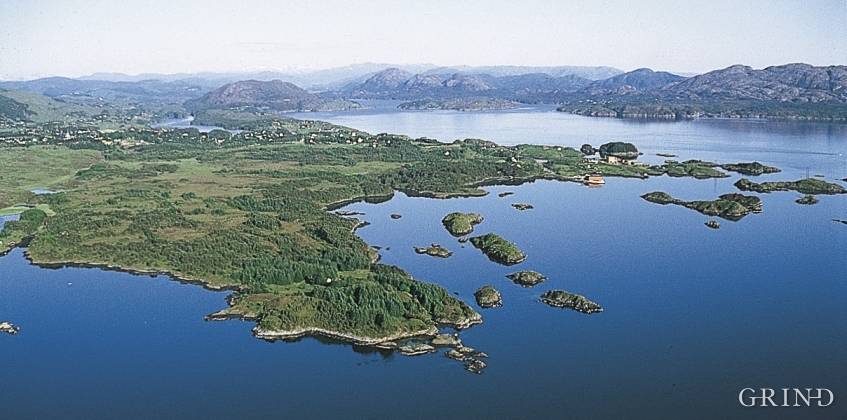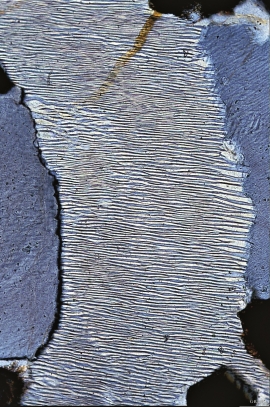Published: 07.08.2015 | Author: Haakon Fossen
The flat land between Skageneset (in the foreground) and Manger centre (left backgound= is often called "the steppes of Manger". Here, one finds some of the flattest bedrock surfaces in Outer Hordaland. The strandflat is especially well developed in this area. (Helge Sunde)
MANGERITE
Mangerite is a rock type that was first made famous in a treatise by the Bergen geologist Carl Fredrik Kolderup in 1903. The rock type got its name from the place where it was found, and has made the Mangerud name well known around the world, at least among geologists.
Various mangeritic rock types are found several places in Hordaland, but Manger is what geologists call the "type locality". This intrusive rock type resembles granite, and stone-workers would probably call it a dark granite. Similarly as granite, mangerite contains potassium feldspar and plagioclase feldspar. Mangerite is nonetheless more basic (alkalic) than normal granite, and is richer in dark minerals such as pyroxene, hornblende and dark mica (biotite).
If we examine potassium feldspar under a microscope, we will see some characteristic, worm-like stripes that geologists refer to as "perthite structures". The "worminess" comes from a sodium-rich variety of feldspar that precipitated out as the rocks cooled about a billion years ago.
On Radøy, the mangerites are found in an area that stretches north- and eastwards from Manger. In this area, one finds mounds that stick up in the terrain. Other rock types in this family are also found other places in the Bergen Arcs, in the high mountains from Voss to Jotunheimen, in Lofoten and in the Egersund area. Some places the mangerites are rich in iron ores, such as ilmenite (titanium iron), magnetite or hematite. Attempts have been made to mine these minerals by Selfallet on the west side of Mangersvågen, but without much success.
On a global basis, mangerite bedrock is uncommon. Therefore, the Bergen Museum has used mangerite as a trade-object, in order to increase its collections of minerals from other parts of the world.
- Austrheim, H. 1978. The metamorphic evolution of the granulite facies rocks of Radøy, with special emphasis on the rocks of the Mangerite Complex. Cand. real avhandl. UiB.





